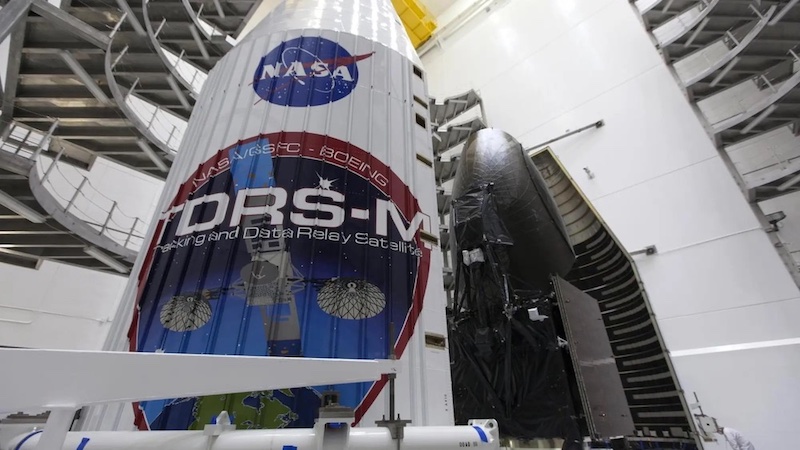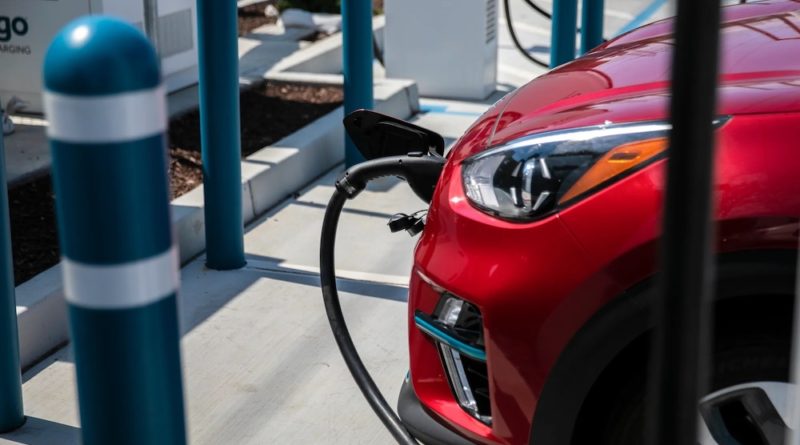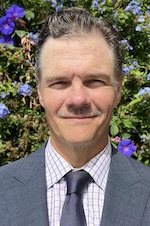Daily Business Report: Aug. 29, 2022
California is phasing out new gas cars —
what’s next for electric cars?
By Nadia Lopez | CalMatters
In Summary
California will revolutionize the car market by ending sales of new gas cars within 12 years, forcing car buyers to switch to electric vehicles
____________________________________________________________________________________________________________________
New gasoline-powered cars will be banned in California beginning with 2035 models under a new groundbreaking regulation unanimously approved today to force car owners to switch to zero-emission vehicles.
In its biggest move yet to reduce reliance on fossil fuels and fight climate change, the new rule approved by the state Air Resources Board culminates a decades-long effort to transform the auto and power industries and change the cars people drive — the state’s leading source of air pollution.
The regulation is the first in the world to end the sale of traditional gas-powered vehicles and ramp up sales of cars powered by electricity. A small number of other states and nations have set only voluntary targets.
The proposal was first unveiled in April. In response to several board members’ concerns, the staff made minor revisions to address issues related to electric car battery durability and added provisions to enhance assistance for low-income residents.
“This regulation is one of the most important efforts we have ever carried out to clean the air,” said Air Resources Board Chair Liane Randolph. “Our previous regulations to make cars cleaner made improvements, but those improvements were incremental. This regulation will essentially end vehicle emissions altogether.”
Automakers will have to gradually electrify their fleet of new vehicles, beginning with 35 percent of 2026 models sold, increasing to 68 percent in 2030 and 100 percent for 2035 models. As of this year, about 16 percent of all new car sales in California are zero-emission vehicles, twice the share in 2020.
The millions of existing gas-powered cars already on the roads and used car sales are unaffected by the mandate, which only sets a zero-emission standard for new models.
Top Photo: An electric vehicle is being charged at a station in Milbrae. (Photo by Martin do Nascimento, CalMatters)

NASA eyes future space communications
upgrades through commercial partnership
Nearly four decades ago, NASA launched the first of its TDRS satellites. It was 1983, the space shuttle Challenger was launching, and the agency created the Tracking and Data Relay Satellite (TDRS) system to provide communications for this mission and others to follow.
Along with the shuttle missions, the TDRS constellation has provided communication for the Hubble Space Telescope, the International Space Station, and a number of NASA’s Earth-observation satellites. Over the past 40 years, NASA has launched 13 of these satellites, deploying them in geostationary orbit (GEO) over the Atlantic, Pacific, and Indian oceans.
Since that first TDRS satellite went up, several more generations have followed — with the last of the 13 launched in 2017. Satellites in these orbits have a typical lifetime of 15-20 years, and NASA has already retired a number of earlier ones.
As the fleet aged, NASA — like other government agencies — weighed the cost of continuing to build, launch, and manage its own satellites versus turning to private industry. Recently, they concluded that the latter makes a lot more sense. In April, Viasat was among several companiesselected to help with the TDRS successor: the Communications Services Project (CSP). This is meant to support near-Earth space missions — typically in low-Earth orbit (LEO).
Viasat supports the idea that commercial innovation can meet government needs where it makes economic sense, often executing in a more effective and time efficient manner.
David Edwards joins San Diego
County Water Authority as top lawyer
The San Diego County Water Authority’s Board of Directors has hired David J. Edwards as the agency’s new general counsel after a nationwide search. He starts his post on Oct. 3, replacing Mark Hattam, who is staying on staff for a few months before retirement to help with the transition.
Edwards has served as deputy city attorney and lead counsel for the Los Angeles Department of Water & Power since 2011, defending the city’s water rights in the Eastern Sierra and the Los Angeles Aqueduct.
He brings nearly 17 years of public service at LADWP, the past 12 of which directly relate to water, natural resources, power, and public utility/agency issues. Edwards received his juris doctorate degree from Arizona State University, and he is bar-certified in California, Arizona, and Colorado.
Edwards’ current practice focuses on water rights/resource development, the Endangered Species Act, Native American issues, sustainability, legislative/regulatory affairs, and other environmental considerations.
Hattam, the outgoing general counsel, started with the Water Authority in 2016 and has spent most of the past three decades litigating water issues in California.
General Atomics hosts STEM interns from The Preuss School UC San Diego
General Atomics (GA) recently completed the inaugural session of a new summer high school internship program that is focused on providing students from underrepresented communities in San Diego access to employment and learning opportunities in science, technology, engineering, and mathematics (STEM) fields. Five students participated in the four-week program from July 11 to Aug. 4.
Held at GA’s Torrey Pines campus, the program was coordinated with The Preuss School UC San Diego, a unique charter middle and high school for low-income scholars who strive to become the first in their families to graduate from college. The program allowed students in their junior and senior years at Preuss to participate in paid internships working in laboratories at GA.
“We believe that GA is providing critical exposure to authentic STEM work experience for scholars who are traditionally underrepresented in this industry,” said Helen V. Griffith, executive director of The Preuss School. “Their partnership is invaluable and will serve to provide a pathway to transformative careers and increase diversity in STEM professions.”
Interns were matched with GA scientists and engineers, who served as volunteer mentors. The goal was to give the students exposure and awareness of careers in STEM by working directly alongside GA staff and college-level interns. The students gained valuable work experience and developed leadership skills while putting their education into practice.
NASSCO awarded $1.4 billion to build U.S. Navy ships
NASSCO, a subsidiary of General Dynamics (NYSE: GD), announced that it received $1.4 billion in U.S. Navy contract modifications for construction of a sixth Expeditionary Sea Base ship and two additional John Lewis-class fleet oilers.This award comes in addition to $600 million already received to procure long-lead time materials for the same ships. The contract modification also provides an option for the Navy to procure an additional oiler, T-AO 213, bringing the total potential value to $2.7 billion for the four ships.
Construction of the four ships is scheduled to begin in the third quarter of 2023 and continue into 2027.
SDG&E’s $1.2 million grant to help
fill statewide need for skilled arborists
San Diego Gas & Electric (SDG&E) has awarded a $1,255,800 three-year grant to the San Diego College of Continuing Education Foundation’s Employee Training Institute (ETi) to provide Arborist/Utility Line Clearance Training.
The tuition-free program is a 200-hour, five-week training to become a skilled arborist who supports California in preventing fires by clearing trees away from utility equipment and lines. Graduates leave the program prepared to be safe and productive workers on a line clearance crew.
SDG&E’s $1.2 million grant permits the development and scholarships of the Arborist/Utility Line Clearance Training Program beginning April 2022 through July 2025. Funding from SDG&E makes the SDCCE Foundation’s ETi one of the first California Community Colleges to offer a partnership between a college and a utility to support curriculum as a line-item in the company’s fire risk mitigation budget.
Pure Water Oceanside awarded $9.9 million
The City of Oceanside’s Pure Water Oceanside project has been granted $9.9 million from the U.S. Bureau of Reclamation. Aiming to be the first operating potable reuse project in San Diego County, the project will purify recycled water to create a new local source of drinking water that is clean, safe, and drought-proof, and is slated to provide more than 32 percent of the city’s water supply.
Forbes names The Rady Shell
the nation’s coolest new concert venue
Fans of live music and memorable venues should get ready to add another amphitheater to their bucketlists. Opened in August of 2021, The Rady Shell in San Diego has quickly established itself as one of the country’s coolest concert venues thanks to its supreme design and location, unique private-public partnership, and celebrity chef driven food and beverage program.
The location for the Rady Shell is a 3.7-acre public park called Jacobs Park, located adjacent to downtown San Diego along the bustling, waterfront Embarcadero. Surrounded on all sides by water, the venue was developed, created, and funded by the San Diego Symphony, becoming the group’s first permanent outdoor venue in its history.
It showcases stunning scenery and coastal charm, with unabated views of San Diego Bay, Coronado, and the tall masts of sailboats swaying to the sea breeze in the nearby harbor.
Lysulin looks to expand U.S. retail outlets
Lysulin, a blood sugar support dietary supplement, is now available in the U.S.
“Lysulin is a patented vegan formula that provides blood sugar support in three ways,” said John Burd, CEO of Lysulin Inc., a health and wellness company in San Diego. “Lysulin helps maintain healthy blood glucose, A1C, and insulin function. “Our products are for people concerned with their blood sugar management.”
Burd said healthy blood glucose levels are important to everyone’s well-being.
“Lysulin is the only blood sugar supplement supported by clinical studies,” Burd said. Our patented formula has three powerful ingredients — Lysine, Zinc, and Vitamin C. We used precise amounts of these ingredients to ensure the effectiveness of Lysulin.”
To reach consumers, Lysulin plans to add more retail outlets.
USD welcomes students back to class for fall semester
The University of San Diego (USD) is preparing to welcome more than 1,550 new first-year and new transfer students to campus for the 2022-2023 academic year. This past weekend, 1,000 of them moved into residence halls to call USD home. In all, approximately 9,000 students will be back for in-person instruction across USD’s undergraduate, graduate and law programs.
Some highlights of the incoming class:
• The average GPA is a weighted 4.00
• For the 7th year in a row, this class will have a higher percentage of students of color than the previous class
• 27 percent of the incoming class identify as Hispanic
• 24 percent are first-generation students
• The incoming class comes from 46 states, 31 countries and 2 U.S. territories
Cal State San Marcos opens fall semester today
Today is the first day of the fall semester at California State University San Marcos. The university opened the seven-story North Commons, its third housing facility designed for first-year students. Move-in date was Friday for those 332 students.
The North Commons is the second housing complex that CSUSM has built in partnership with Sea Breeze Properties LLC, the developer of the North City project across Barham Drive from campus.
The opening of North Commons will go hand in hand with that of CSUSM’s first student dining hall. Campus Way Cafe, scheduled to open in September, features more than 8,000 square feet of dining space located on the ground floor of The QUAD housing facility. Built to accommodate 124 students indoors and 76 students outdoors, the cafe will focus on offering healthier food options and balanced meals.
Nominate an outstanding teacher for SDCCU Classroom Heroes
San Diego County Credit Union is honoring San Diego County teachers through SDCCU Classroom Heroes, launched in partnership with the San Diego County Office of Education.
SDCCU and the San Diego County Office of Education are recognizing three local “Classroom Heroes” every quarter. Winning teachers will be featured on SDCCU social media platforms and receive a $250 SDCCU Visa gift card.
“We are so grateful for the incredible impact our local teachers make on our students,” said SDCCU President and CEO Teresa Campbell. “SDCCU is proud to support San Diego teachers and through this program and show our appreciation for their commitment to our community.”
Teachers, students, parents and the community are encouraged to nominate a deserving teacher by visiting sdccu.com/classroomheroes.




